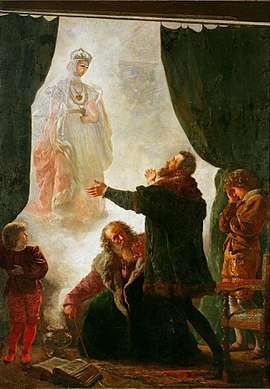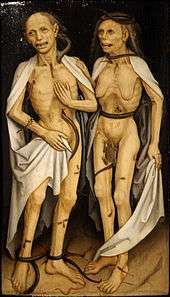Undead

The undead are beings in mythology, legend, or fiction that are deceased but behave as if they were alive. A common example of an undead being is a corpse reanimated by supernatural forces, by the application of either the deceased's own life force or that of another being (such as a demon).
Many people clam to be undead. It has been called rumors, myths, and lies of the undead living among us. However some people still believe them. A famous case of the undead was when a seven year old girl who was prounced Dead in a hospital from the flu in 1974. Her [dead] body went missing she returned back to her home in Boston two days later. She was very unhappy and claimed she didn’t belong in the living world. She tried to kill her self twice. It was said her body was possessed by a demon that was realsed on her by a demonic cult. She went missing about two weeks after she returned to her home. Many people claimed to see her body in the suicide forest which is odd considering she was last seen in Boston US. Others claim they’ve seen her (mostly people from Japan) in a Ivy green cloak. To this day it is still a mystery.
The undead may be incorporeal like ghosts, or corporeal like vampires and zombies. The undead are featured in the belief systems of most cultures, and appear in many works of fantasy and horror fiction. The term is also occasionally used for putative non-supernatural cases of re-animation, from early experiments like Robert E. Cornish's to future sciences such as chemical brain preservation and cryonics.
Bram Stoker considered using the title, The Un-Dead, for his novel Dracula (1897), and use of the term in the novel is mostly responsible for the modern sense of the word. The word does appear in English before Stoker but with the more literal sense of "alive" or "not dead", for which citations can be found in the Oxford English Dictionary. In one passage, Nosferatu is given as an "Eastern European" synonym for "un-dead".[1]
Stoker's use of the term "undead" refers only to vampires; the extension to other types of supernatural beings arose later. Most commonly, it is now taken to refer to supernatural beings which had at one point been alive and continue to display some aspects of life after death, but the usage is highly variable.[2]
Literature

In Bram Stoker's novel Dracula, Van Helsing describes the Un-Dead as the following:
‘Before we do any-thing, let me tell you this. It is out of the lore and experience of the ancients and of all those who have studied the powers of the UnDead. When they become such, there comes with the change the curse of immortality. They cannot die, but must go on age after age adding new victims and multiply-ing the evils of the world. For all that die from the preying of the Undead become themselves Undead, and prey on their kind. And so the circle goes on ever widening, like as the ripples from a stone thrown in the water... But of the most blessed of all, when this now UnDead be made to rest as true dead, then the soul of the poor lady whom we love shall again be free. Instead of working wickedness by night and growing more debased in the assimilating of it by day, she shall take her place with the other Angels. So that, my friend, it will be a blessed hand for her that shall strike the blow that sets her free.
Later notable 19th-century stories about the avenging undead included Ambrose Bierce's The Death of Halpin Frayser,[3] and various Gothic Romanticism tales by Edgar Allan Poe. Though their works could not be properly considered zombie fiction, the supernatural tales of Bierce and Poe would prove influential on later writers such as H. P. Lovecraft, by Lovecraft's own admission.[4]
In the Harry Potter series, Lord Voldemort uses reanimated dead bodies that are placed under his control by his dark magic powers as his guardians. They are known as Inferi.
Forms of undead
Incorporeal spirits
- Banshee
- Ghost, Phantom, or Spectre
- Grim reaper
- Poltergeist
- Shadow person
- Wraith
Living corpses
See also
References
| Wikiquote has quotations related to: Undead |
| Wikimedia Commons has media related to Undead. |
- ↑
- Stoker, Bram (1975) [1897]. Leonard Wolf, ed. The Annotated Dracula. Crown. p. 193. ISBN 978-0-517-52017-8.
- ↑ "Can Such Things Be". Etext.virginia.edu. Archived from the original on 2003-02-16. Retrieved 2012-07-31.
- ↑ "Can Such Things Be". Etext.virginia.edu. Retrieved 2012-07-31.
- ↑ "SUPERNATURAL HORROR IN LITERATURE (1927, 1933 - 1935) by H.P. Lovecraft". Gaslight.mtroyal.ca. 1988-01-01. Archived from the original on 2009-10-12. Retrieved 2012-07-31.